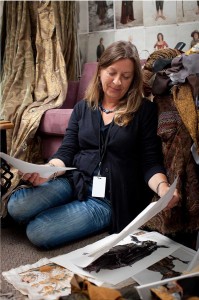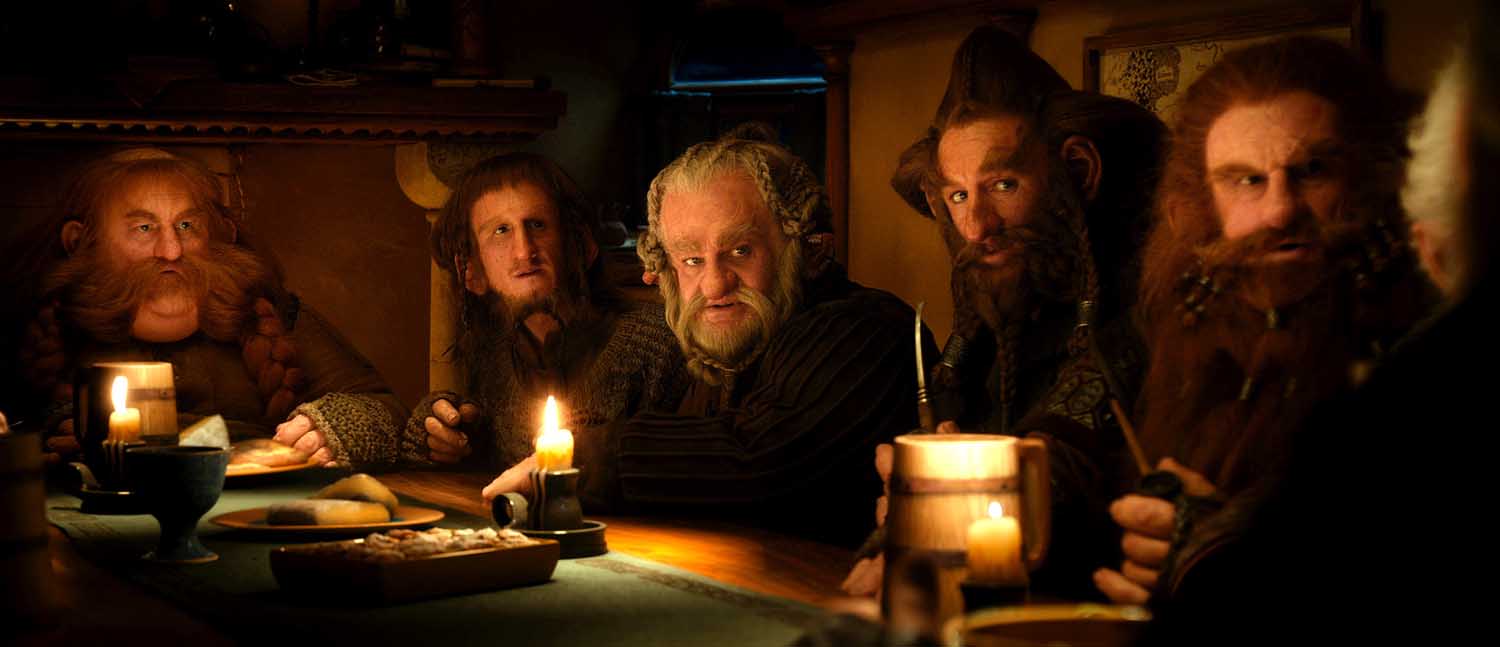
Ann Maskrey found herself cast in the role of costume designer overnight on the set of Peter Jackson’s The Hobbit: An Unexpected Journey. Having worked as a costume cutter for much of her career – most notably for Batman Begins (2005) and Alice in Wonderland (2010) – Maskrey had turned down many other projects to travel to the New Zealand set to originally take a different position within the costume department. “I really wanted to go to New Zealand and work on the film,” said Maskrey. “It is the sort of project I love doing and have had a lot of experience with, having done many period and fantasy projects throughout my career. When I arrived there, things were going through a period of change and I was offered the position of costume designer, so I had only three months to prep before filming. It wasn’t the easiest of starts to a job which was undoubtedly the biggest opportunity of my career.”
Maskrey threw herself into conceptualizing the fantasy world. “I researched many periods of art history, architecture, textiles and fashion,” she said. “For the dwarves, I plundered Anglo Saxon reference and for the Rivendell elves, Romanesque art and architecture and Art Nouveau art and jewelry. For Radagast, I looked at more organic references such as photographs of trees, bark and moss and at some 17th and 18th century embroidery and early William Morris prints and textile. The research is across the board, through all cultures and periods, and always a great pleasure as one learns many things along the way. Obviously I had to look back to The Lord of the Rings to keep a reference at what preceded The Hobbit when it came to re-doing the characters who had appeared in the earlier films, but hopefully I have blended the looks successfully and given them fresh appeal.”

New Zealand wasn’t the most hospitable of habitats for a costume designer looking to dress fantastical characters. “Particularly hard to get used to was the lack of variety of available fabrics in New Zealand,” Maskrey said. “Thankfully I had a talented and hardworking textile team and many of our featured textiles were produced in house.” Attention to detail was always on her mind when it came to the presentation of the costumes. “The red eye camera was particularly hazardous when choosing fabrics. Some things I wanted to use were just out of the question. It was also very unforgiving, so a high level of detailing was inevitable.”
For Maskrey, when the details come together, it was moments of pure magic. “I think one of my best memories from the film is Cate Blanchett’s elegant entrance to the film on the steps of the White Council. It was one of those moments when everything came together. I had fitted and photographed the costume in a certain way in our fitting room and when Peter saw the photo he wanted to copy the look of it and asked the art department to add similar steps to the set. It meant I could keep the extra-long train on the coat and Cate is an actress who can move beautifully and she did a perfect turn which emphasized the cut and fabric of the coat.” Maskrey’s debut as a costume designer is filled with moments like these. “I feel very fortunate that I got to design the film,” she said.





